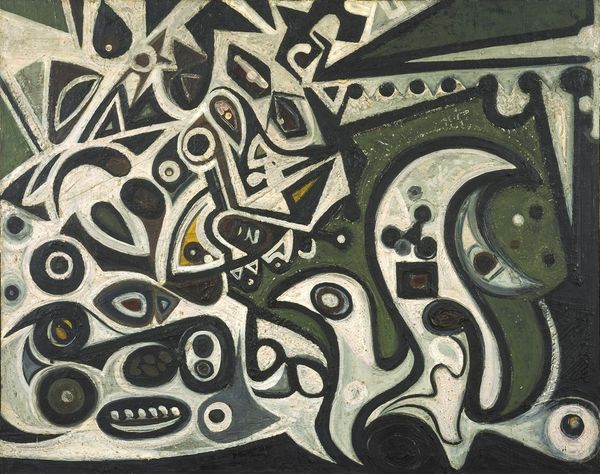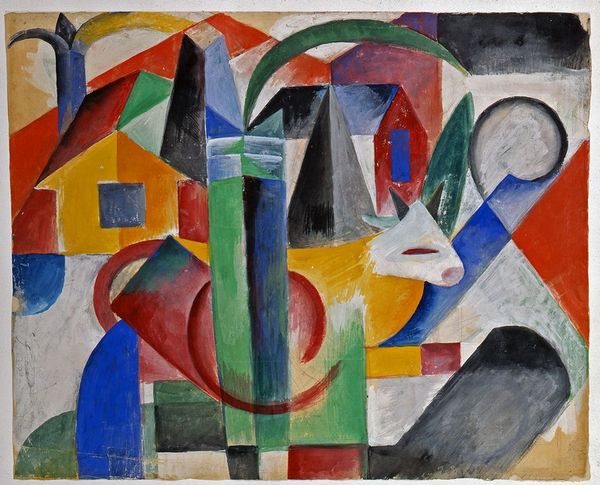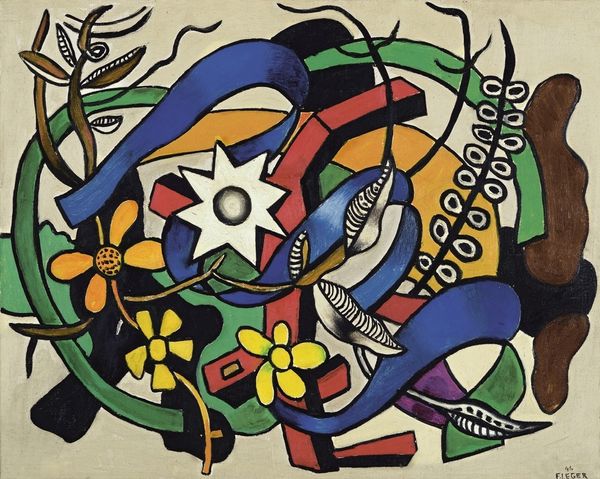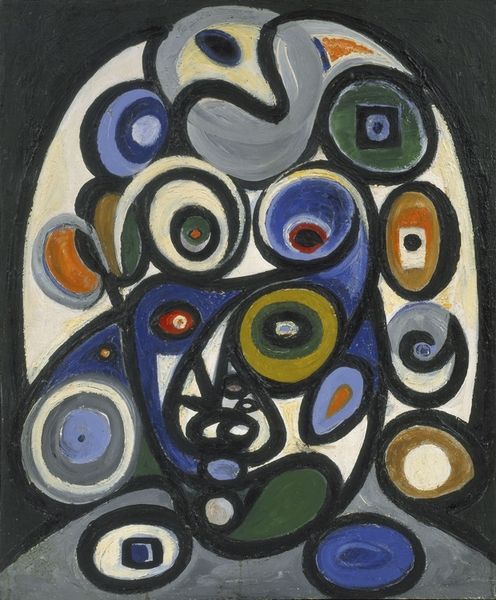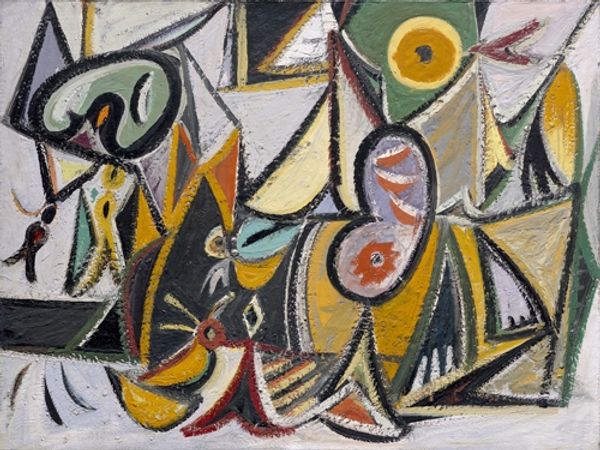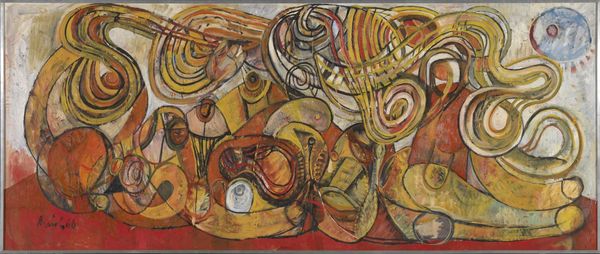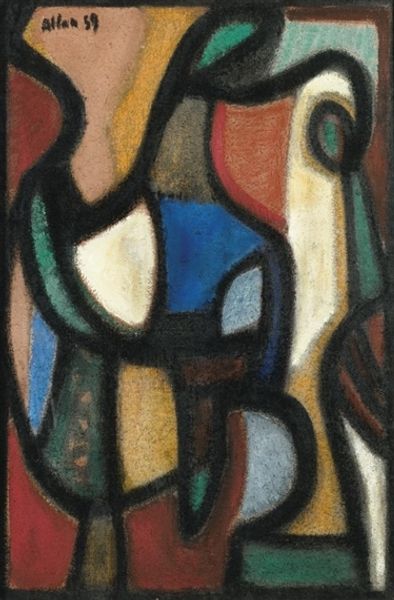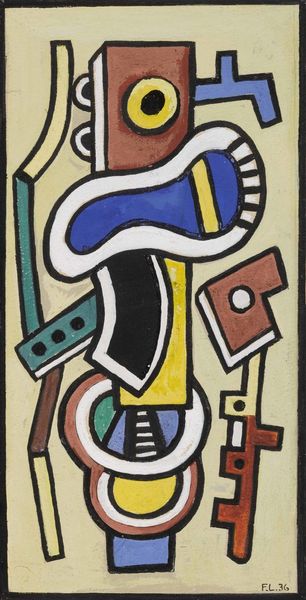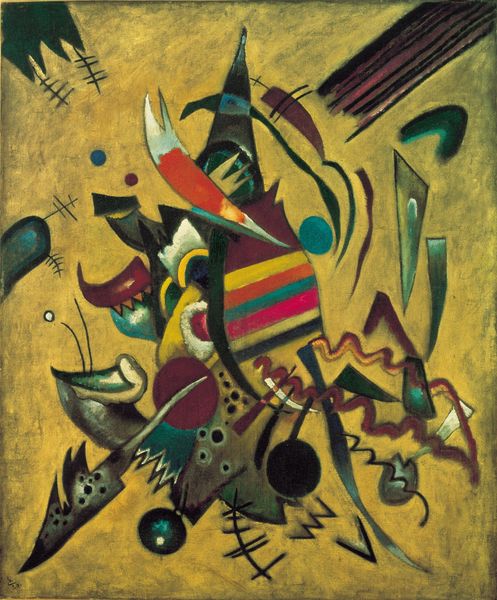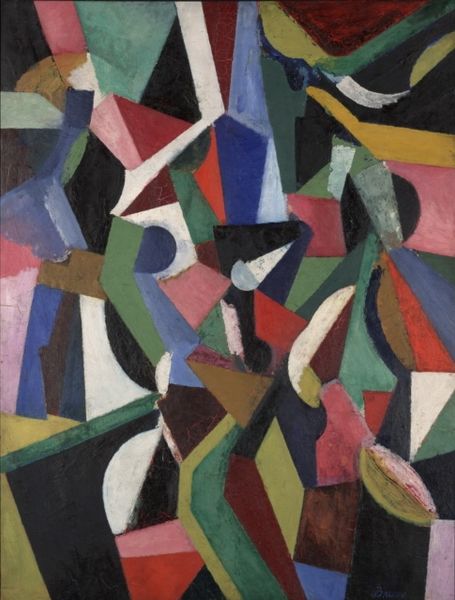
mixed-media, painting
#
abstract-expressionism
#
abstract expressionism
#
mixed-media
#
organic
#
non-objective-art
#
painting
#
form
#
geometric-abstraction
#
line
Copyright: Richard Pousette-Dart,Fair Use
Curator: Let's discuss Richard Pousette-Dart's mixed-media work, "Desert," created in 1940. What are your first thoughts? Editor: It strikes me as a tightly packed, almost claustrophobic composition despite its title. The earthy tones create a somber mood, as if the desert's vibrancy is intentionally muted. Curator: Considering the era, the work can be understood within the context of the lead-up to World War II, where a sense of anxiety and confinement was pervasive. Artists, including Pousette-Dart, grappled with the increasing sense of societal unease. "Desert" seems to embody that feeling, not necessarily through direct representation, but through its overall unsettling visual experience. Editor: Yes, the muted palette does hint at a wasteland of sorts. However, I am also interested in the formal relationships, namely the repetition and interplay between the geometric forms, and curvilinear shapes. See how he balances triangles against circular motifs, achieving a state of organized chaos? Curator: The influence of Indigenous art, prevalent during that time, should also be considered. Many artists sought inspiration in the visual vocabularies and spiritual beliefs of Indigenous cultures. There is this primitivism in the use of geometric forms and abstracted figures; perhaps an effort to connect with elemental or primal truths about humanity’s relationship to its environment. Editor: From my perspective, each shape pushes against the other, the hard edges with soft curves, to create the tension, rather than relying on social commentary or influence. Look at how he created those tiny circular shapes and placed them along a rigid, square grid, softening the angular aspects through curvilinear repetition. Curator: But, aren’t those aesthetic choices also linked to broader existential questions that artists were asking themselves then? His formal decisions reveal his struggle with the world's challenges. It shows how art, even in abstraction, reflects our existence. Editor: Perhaps we are both correct. What I do see is that whether rooted in formal concerns or broader contexts, "Desert" delivers a visually stimulating encounter, which seems quite striking considering its sombre character.
Comments
No comments
Be the first to comment and join the conversation on the ultimate creative platform.
